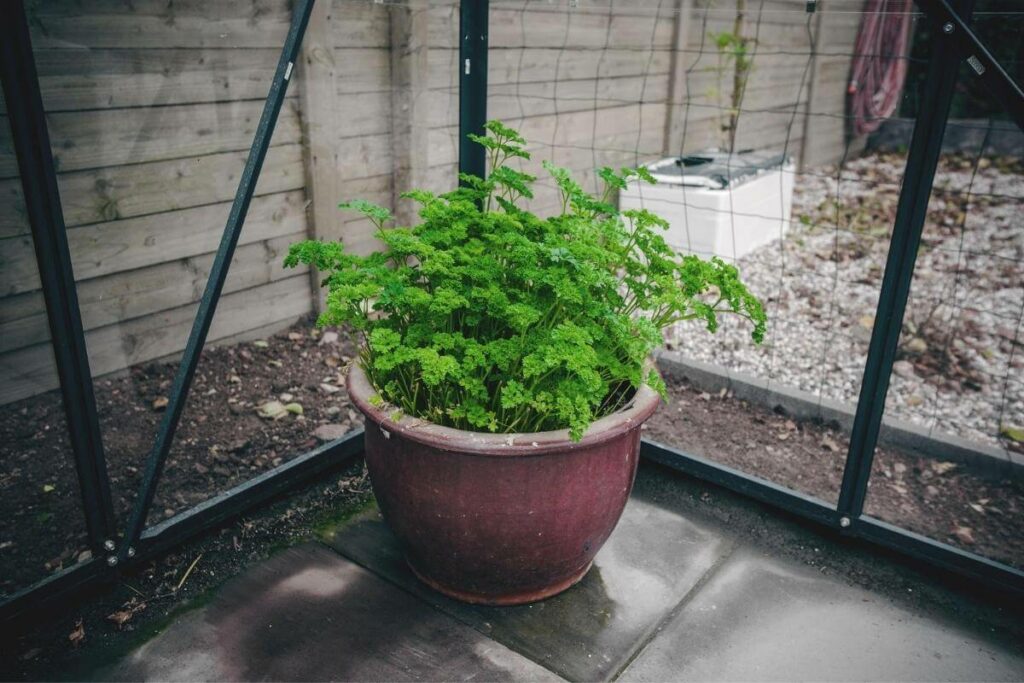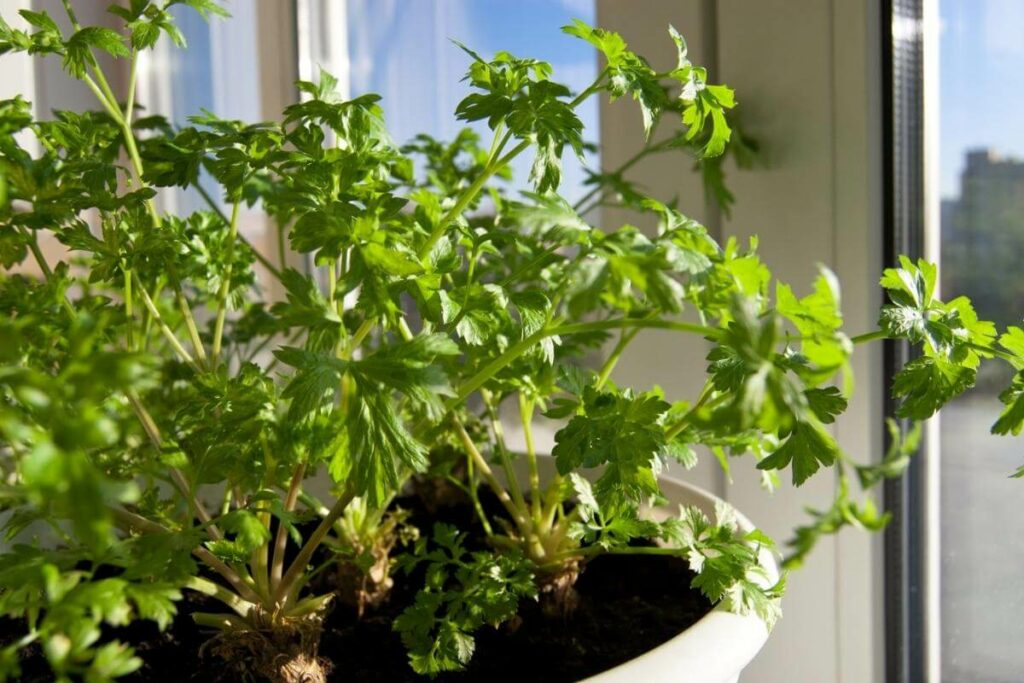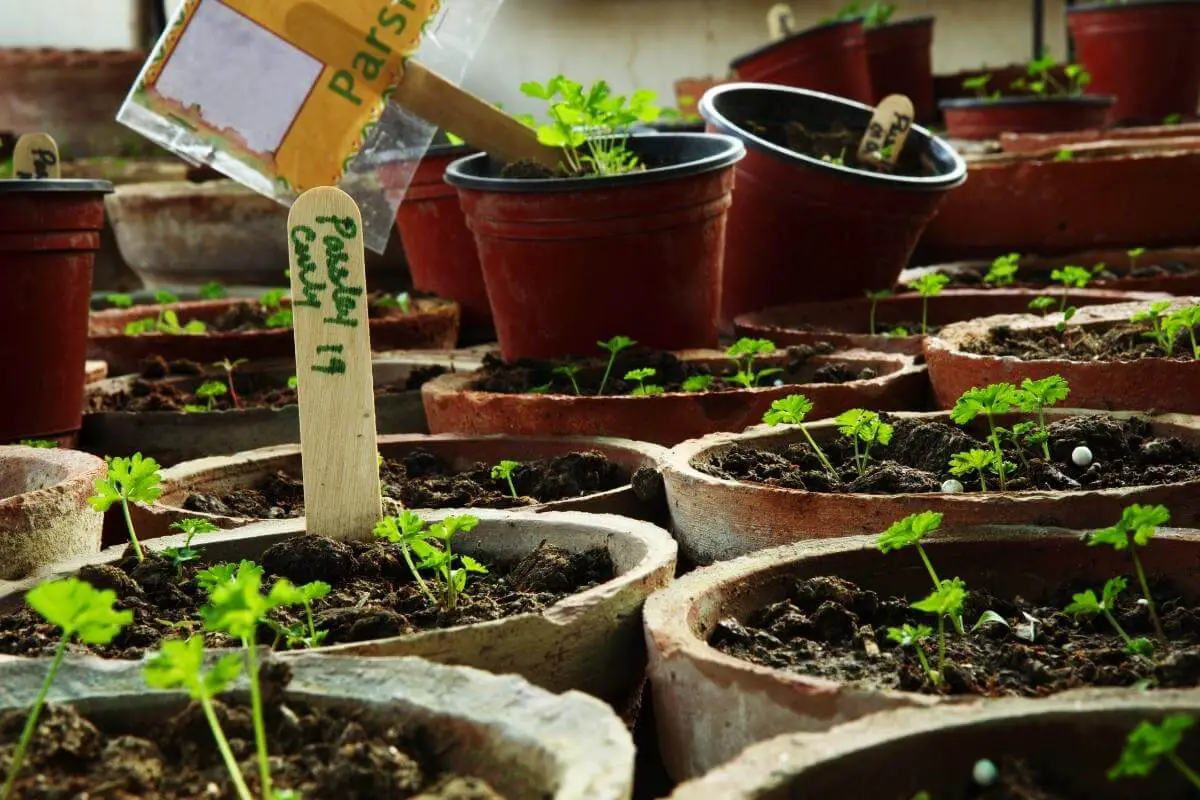Parsley isn’t just the garnish of choice of many restaurants. The herb is incredibly heart-friendly, full of iron and vitamins A, C, and K.
It comes in a few varieties, including Italian flat-leaf (Petroselinum crispum) and curly parsley (Petroselinum crispum neapolitanum).
While the herb is pretty easy to grow, it sometimes turns yellow. Can you overwater parsley?
You can overwater parsley. Both overwatering and underwatering this herb will result in yellow leaves. Parsley enjoys its soil being moist but doesn’t like being waterlogged. Thus, if the day is particularly hot or windy, it may require a second watering.
Because parsley does turn yellow when it isn’t watered enough, many people assume yellow parsley always means it needs more water.
Unfortunately, parsley turns yellow for any of its stressors, including overwatering.
Thus, if your parsley is turning yellow, check its soil before jumping to conclusions.
Why Does Parsley Turn Yellow?
Parsley can turn yellow due to:
- underwatering
- overwatering
- too much hot sun
- too much wind
- or pests
Because parsley is often grown in containers, its soil can dry out faster thanks to too much sun or wind.
However, some containers don’t drain well, and boggy soil causes parsley’s roots to rot.
How To Check Your Parsley’s Soil
If your parsley is turning yellow, the first thing is to start regularly checking its soil.
The easiest method is to just stick your finger into it and see if it is dry, damp, or boggy.
If that doesn’t appeal, use a dry stick or chopstick and gently ease it into the pot, and give it a little wiggle so you can see in there.
What To Do If Parsley Is In Dry Soil?
If the parsley’s soil is too dry, then it needs to be watered more often.
If you are watering it once a day, switch to two.

Also, consider moving the plant into partial shade if it is standing in full sun. Parsley loves warm weather and sunshine.
However, the herb hails from Europe, so some places in the world, such as parts of the United States, get far hotter in summer than parsley prefers.
So, a little shade might perk it up and keep its soil from drying out so fast.
If your parsley is planted into the ground, make it a little shelter with some shade cloth to take the edge off your intense summer heat.
Even Better: A wind shelter could be helpful, too, if it has been particularly blustery.
What To Do if Parsley Is in Boggy Soil?
If the parsley’s soil is too boggy, you might be overwatering it.
Cut back and see if that helps. If the soil continues to be boggy, then it is time to repot it.
Boggy soil causes root rot, which is bad for the plant as well as for people who use parsley roots for herbal remedies.
Parsley is very happy in good old potting soil. First, make sure you have a container of the correct size, so the roots have room. Also, ensure the container has drainage holes and a bit of gravel or rocks at the bottom.
Then replant your boggy parsley into a nice, drainable new home.
Compost is lovely stuff, and your parsley would like some, but it sometimes holds water. Make sure to mix compost well with potting soil or something similar to help with the drainage.
Also, adjust your watering. You might need to scale it back to every two or three days, especially if there is a lot of leaf matter in your compost.
Oddly enough, parsley can handle living in clay soil when planted directly into the earth. But again, you need to adjust the watering accordingly and make sure that part of your garden isn’t becoming boggy.
Again: In some soils, parsley does better watered every three days rather than daily.
Parsley Attacked by Aphids or Spider Mites
If your parsley is yellow, but the soil is fine, and the heat or wind isn’t blasting it, then you might have pests.
Common parsley pests that create yellow spots or droopy yellow stems are aphids and spider mites.
What to Do if Your Parsley Has Aphids
Thankfully, aphids rarely hurt the parsley enough to kill it.
Predatory insects also tend to keep the little critters in check. But occasionally, aphids start making parts of your parsley turn yellow and distort those stem growth.

If it is just a couple, squish ‘em. Alternatively, prune the couple of branches the pests are hanging out on, and then your problem is solved.
Squirting your parsley with water mixed with a dollop of canola oil helps keep aphids from pestering your herb.
Alternatively, use an organic pest spray or the popular recipe below, which is meant for spider mites, but aphids don’t like it either.
What to Do if Your Parsley Has Spider Mites
Spider mites are tiny, making them nearly impossible to see.
But these leave these yellow spots on your parsley, making their presence known.
Spider mites tend to attack parsley that:
- Is underwatered
- Planted in poor nutrient soil
- Over fertilized
- It is in too much shade
As with aphids, prune off any obviously infected parts of the parsley.
Then, use an organic spray or make one from canola oil and a non-degreasing dish soap.
Popular concentrate recipe for aphids and spider mites:
- 2 cups canola oil
- 2 tablespoons of dish soap (liquid, non-degreasing)
Every time you want to use it, put 1.5 teaspoons of the mixture into a spray bottle with 1 cup of warm (not hot) water.
Give it a good shake, then spray your poor parsley, paying attention to the underside of the leaves as well as the top and sides.
Is Yellow Parsley Edible?
Yellow parsley is perfectly edible in that it won’t make you ill.
You might not want to eat it because its flavor has been ruined.
It isn’t so much that it tastes terrible as it just has this dry nothingness about it. But it won’t hurt you.
Conclusion
Yellow parsley is a sign of stress.
You can overwater or underwater parsley. Just check the soil and adjust your watering routine as necessary.
If that doesn’t help, consider adjusting the plant’s position while also checking for pests such as aphids or spider mites.
Also Helpful
- Is an Apple a Fruit or Vegetable? (Quick Answer)
- Arugula Microgreens Vs Arugula
- 5 Microgreens That Regrow After Cutting
